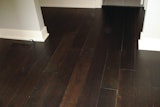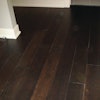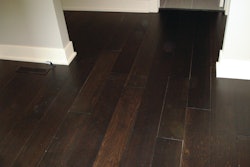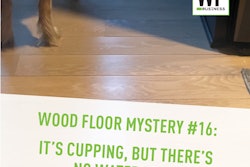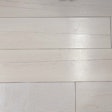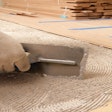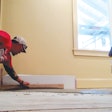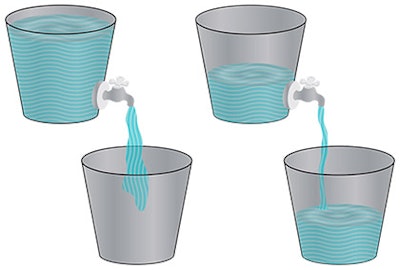
We had bundles that sat on a humid job site and gained too much moisture. I was told wood gains moisture faster than it loses it, so it will take a longer time to dry it back out to the right MC. Is that true?
Andrew St. James, Ph.D., who works in technical services for Micanopy, Fla.-based Goodwin Heart Pine Company, answers:
Certainly wood swells relatively quickly when liquid water is applied, and the process of exchanging water with air is slower—but that isn't the case here, since the wood was exposed to very high relative humidity, not water (as it would be in a flood, dishwasher leak, etc.).
The answer to your question is yes, but why? There are three usual factors that affect the rate of MC change:
- 1. air flow at the surface
- 2. temperature
- 3. distance from MC equilibrium.
There are a couple of other factors that can also control the rate of MC change in wood, but they don't apply here.
What is most important for your question is the size of the "driving force," which depends on No. 3 in our list: how far the system is from equilibrium. With high humidity and dry wood or low humidity and wet wood, the driving force is stronger, so water moves more quickly than when the air and wood are near equilibrium.
To understand this concept, think of this scenario with water buckets: Using a spout near the bottom of the bucket, it takes less time to empty half of a full bucket than it does to refill it from a half-full bucket:
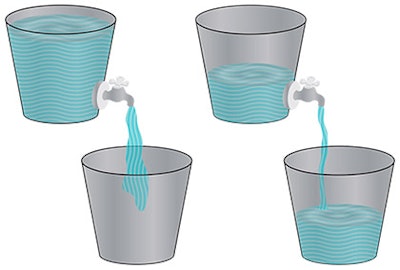
For wood introduced into air at a constant RH, the rate of change in MC is largest at the beginning and gets smaller with time—if the other two factors (temperature and air flow) are constant. When you place properly kiln-dried wood in a very humid environment, the MC will change relatively quickly (still not a fast process). If the RH is lowered (with air flow and temperature constant) before the floor reaches equilibrium, the new driving force will be smaller than the driving force when the wood was first introduced into a wet environment.
For more articles by author Andrew St. James, see:
Wood Floor Cupping: Why Does it Happen & What Can You Do?
Understand the Science of Water and Wood Floors
Understanding How to Measure Moisture Can Avert Job-Site Disasters










